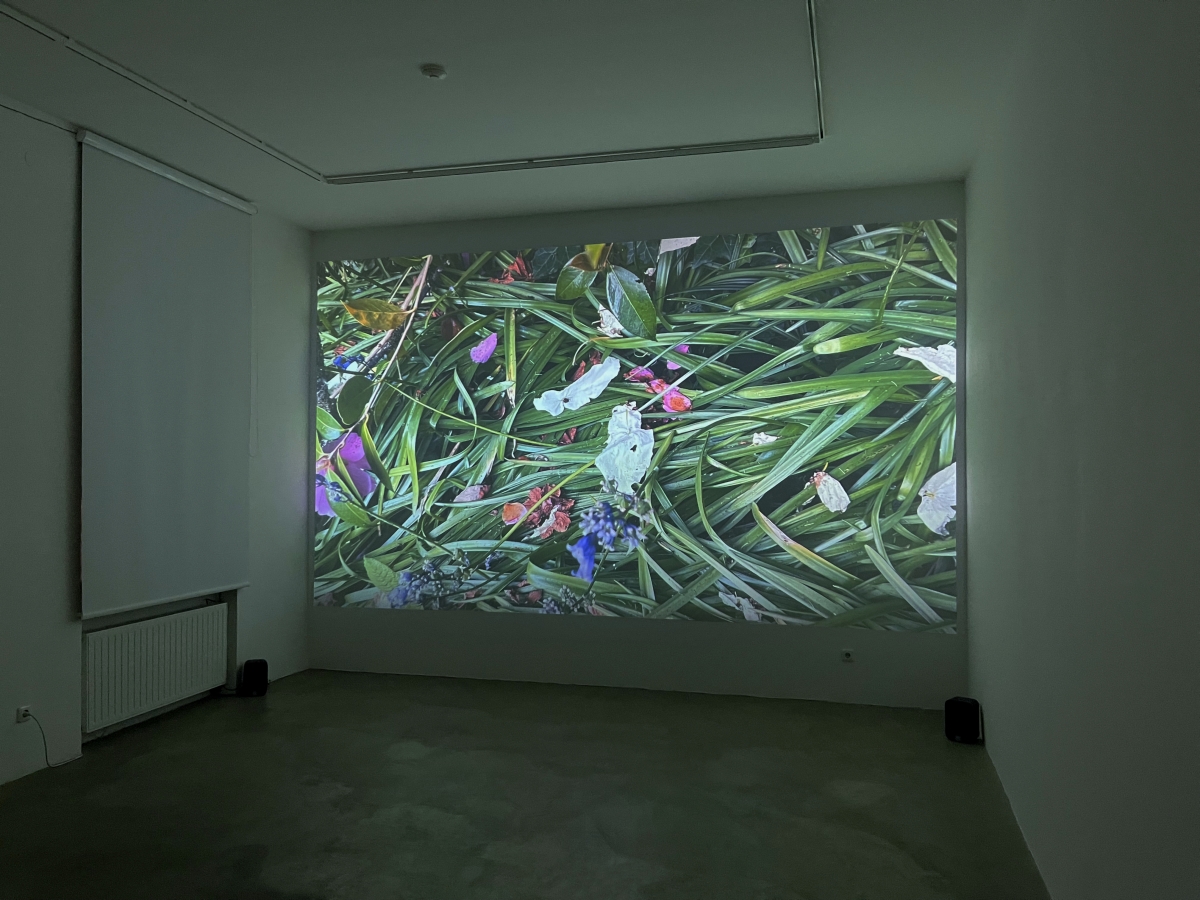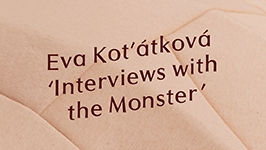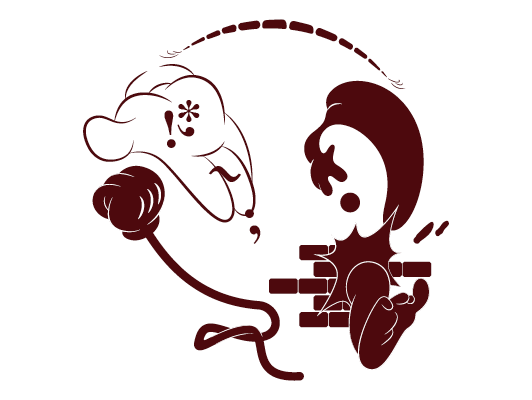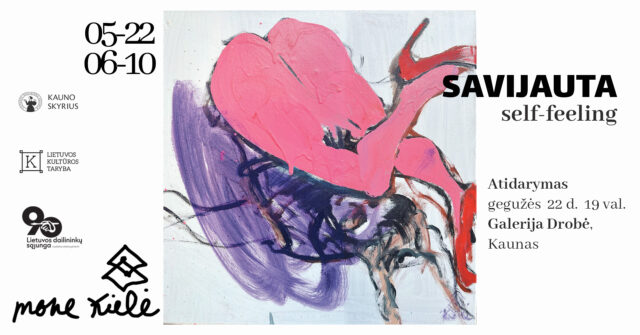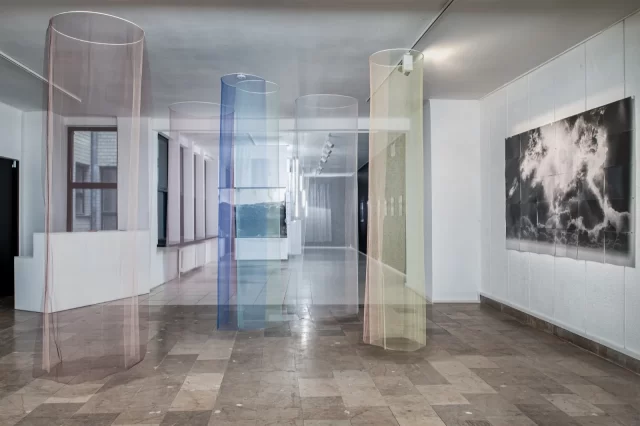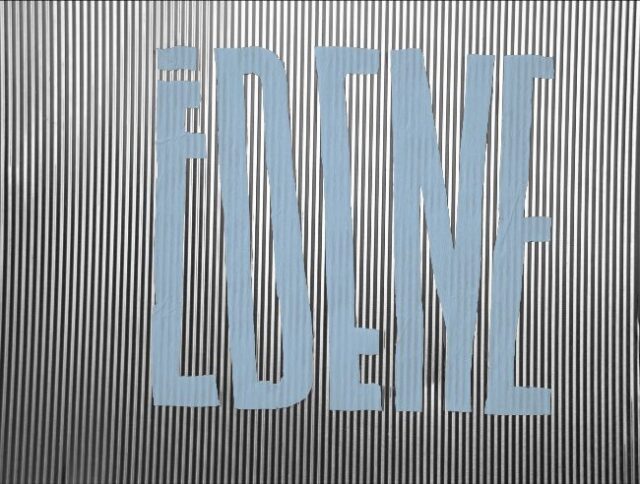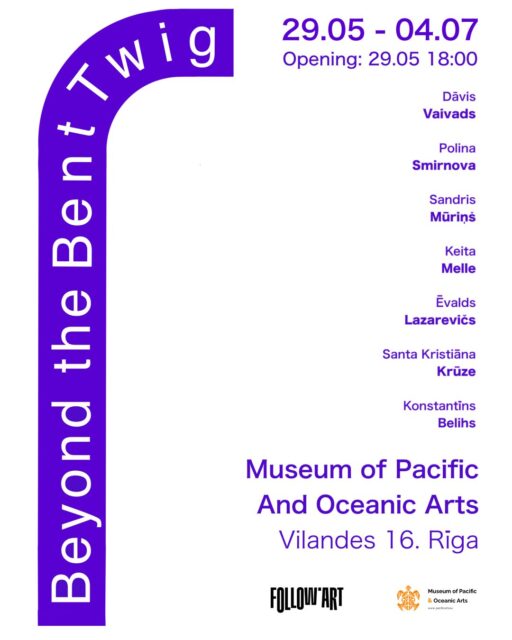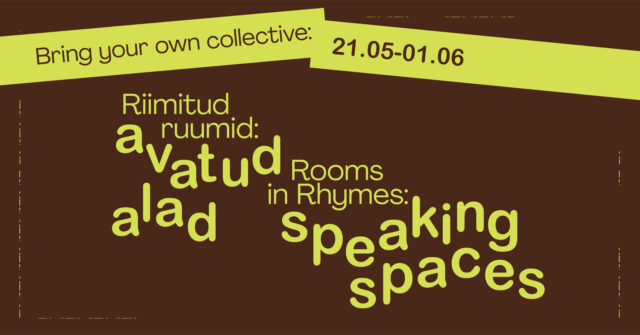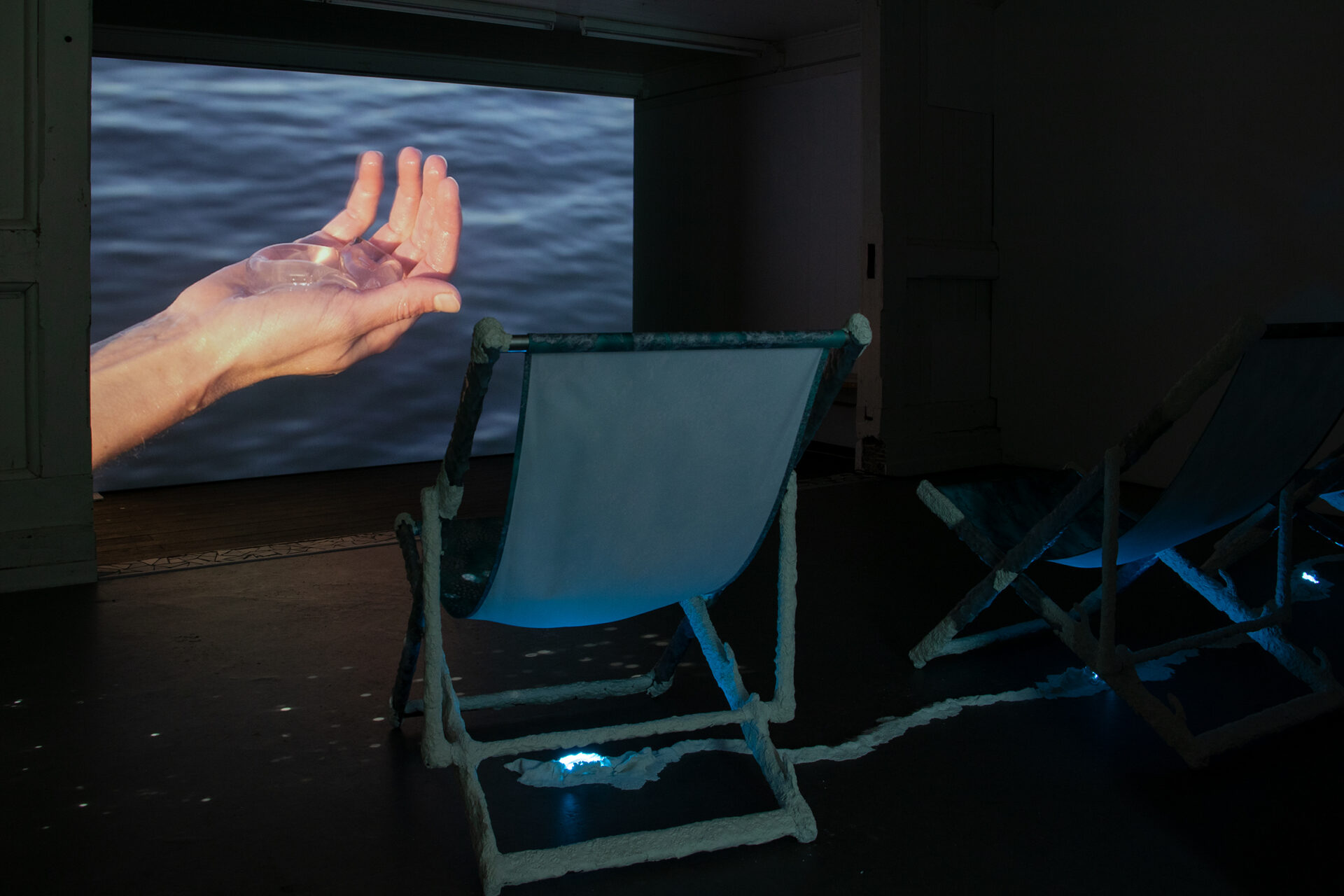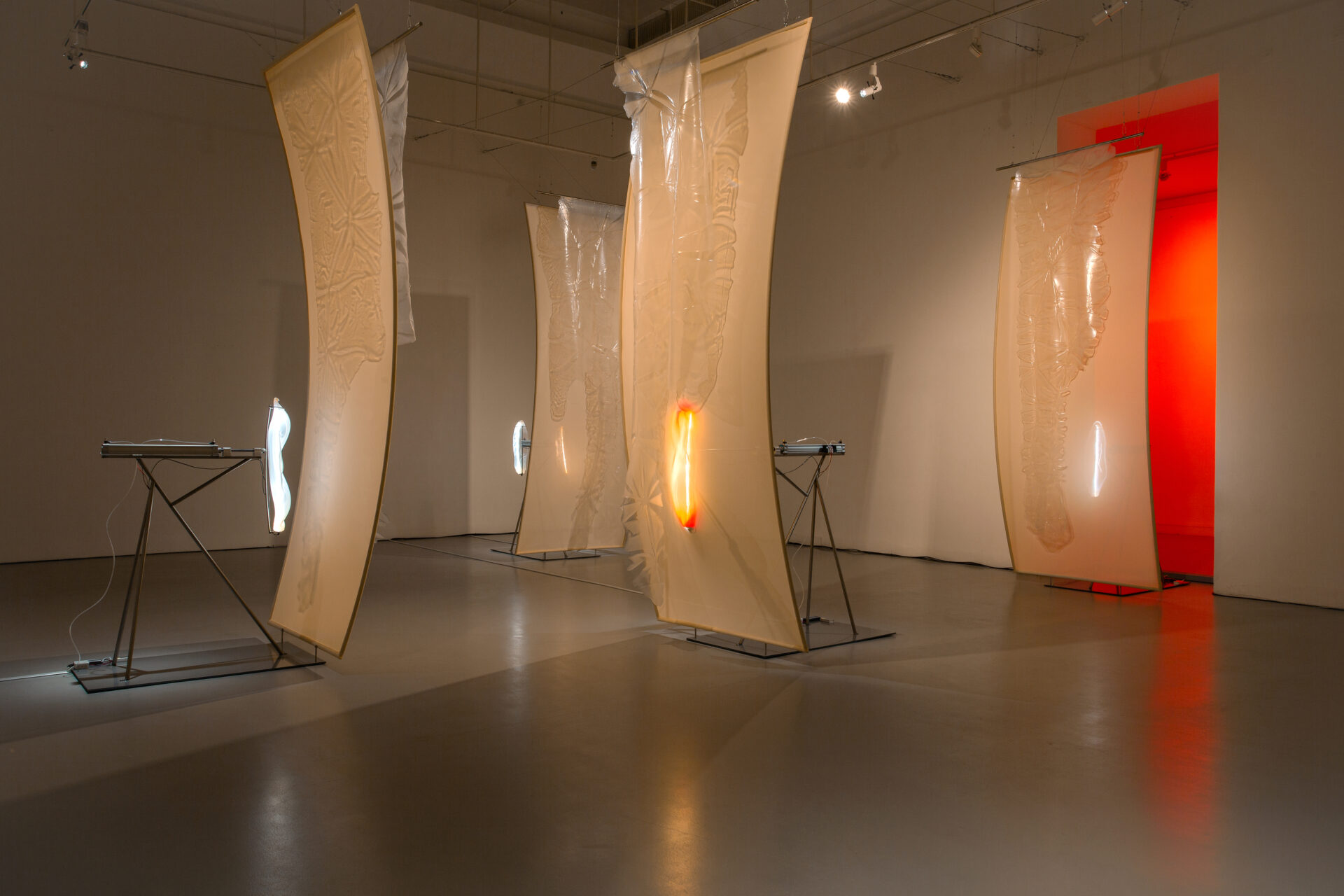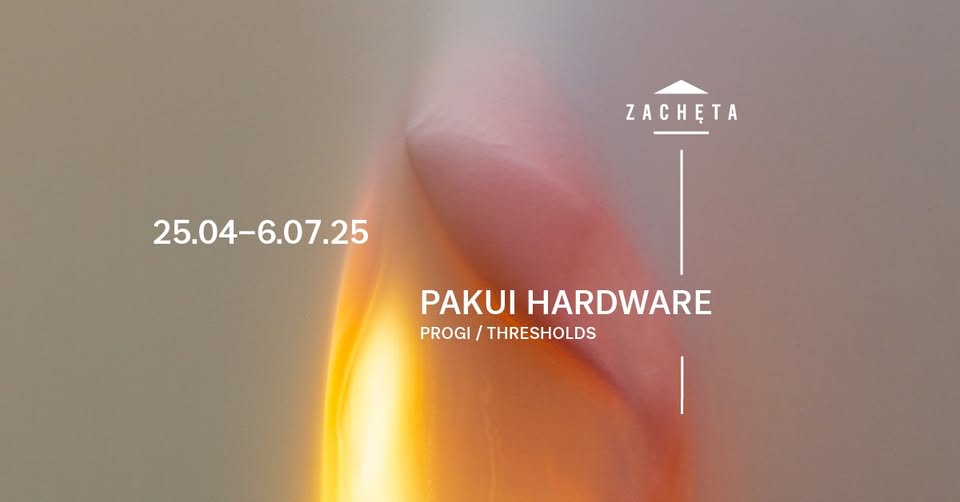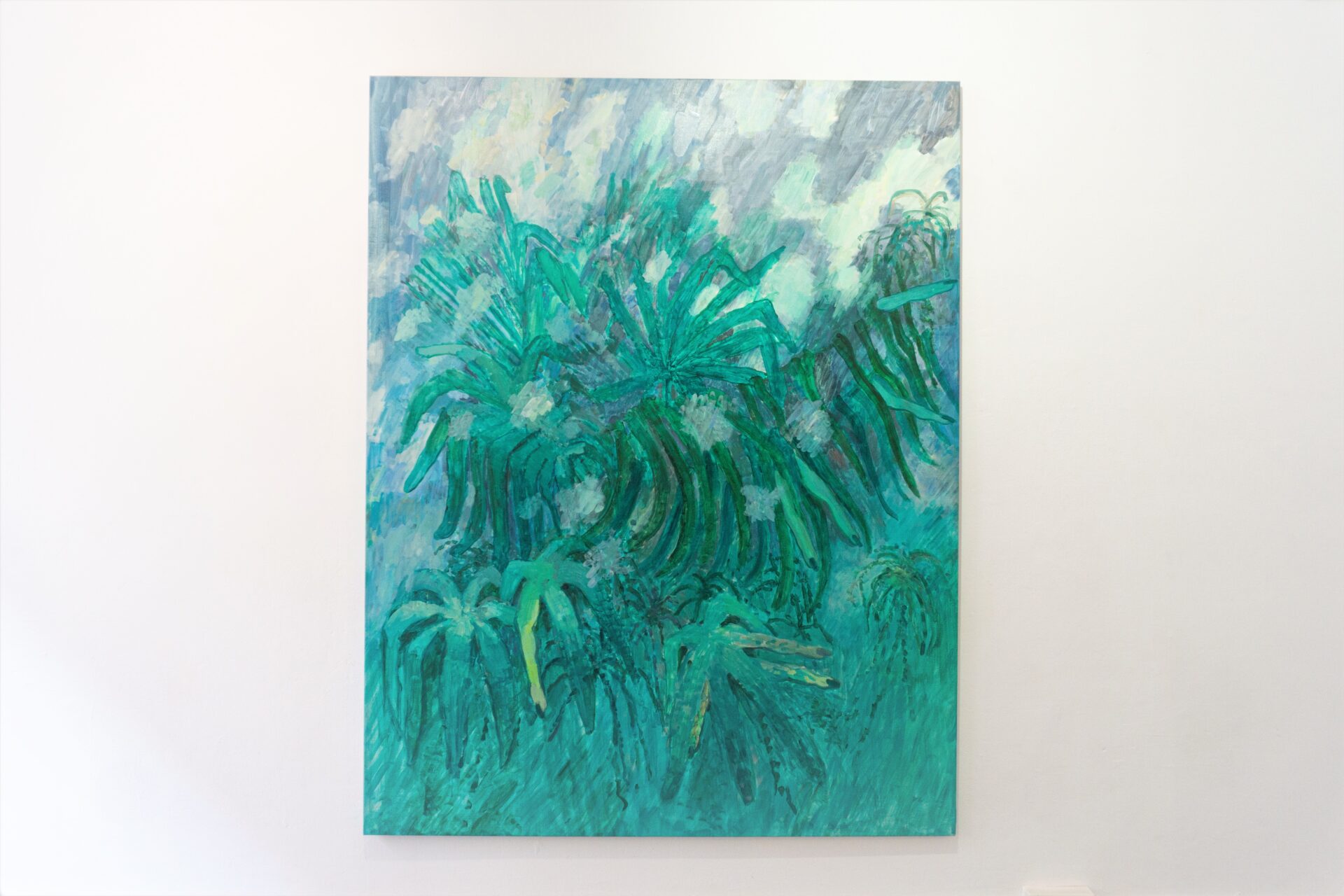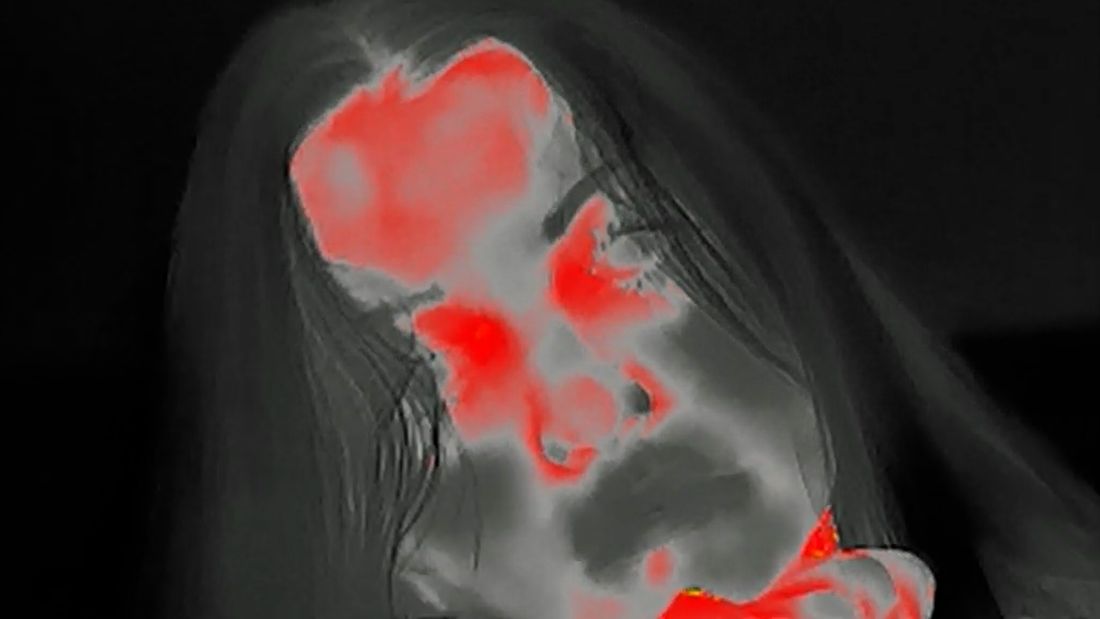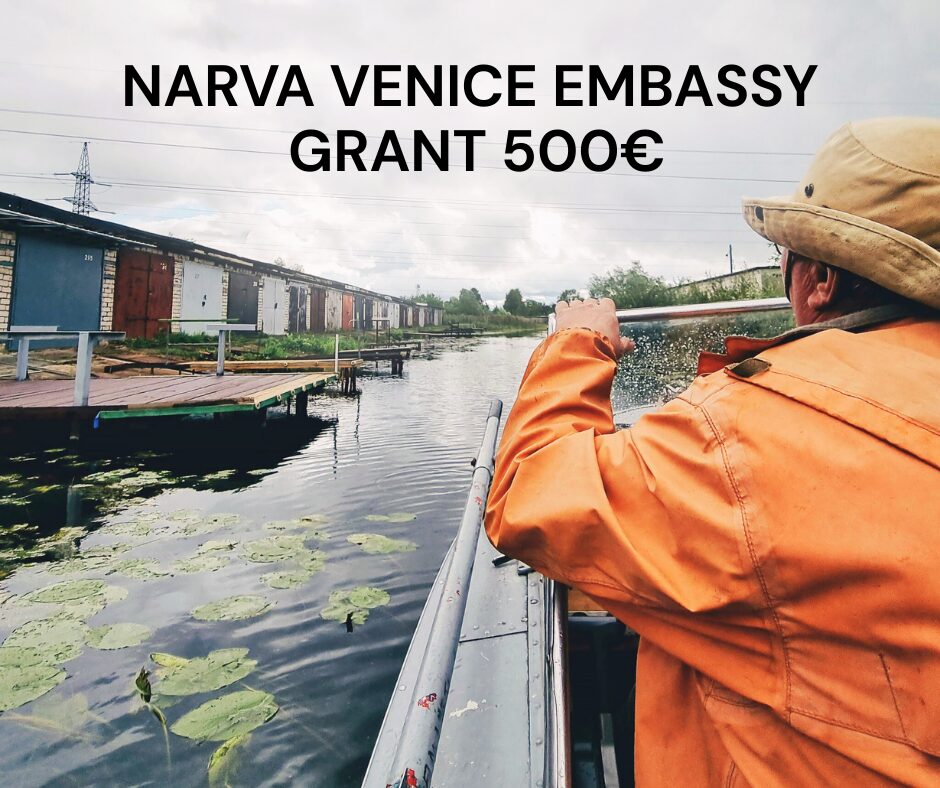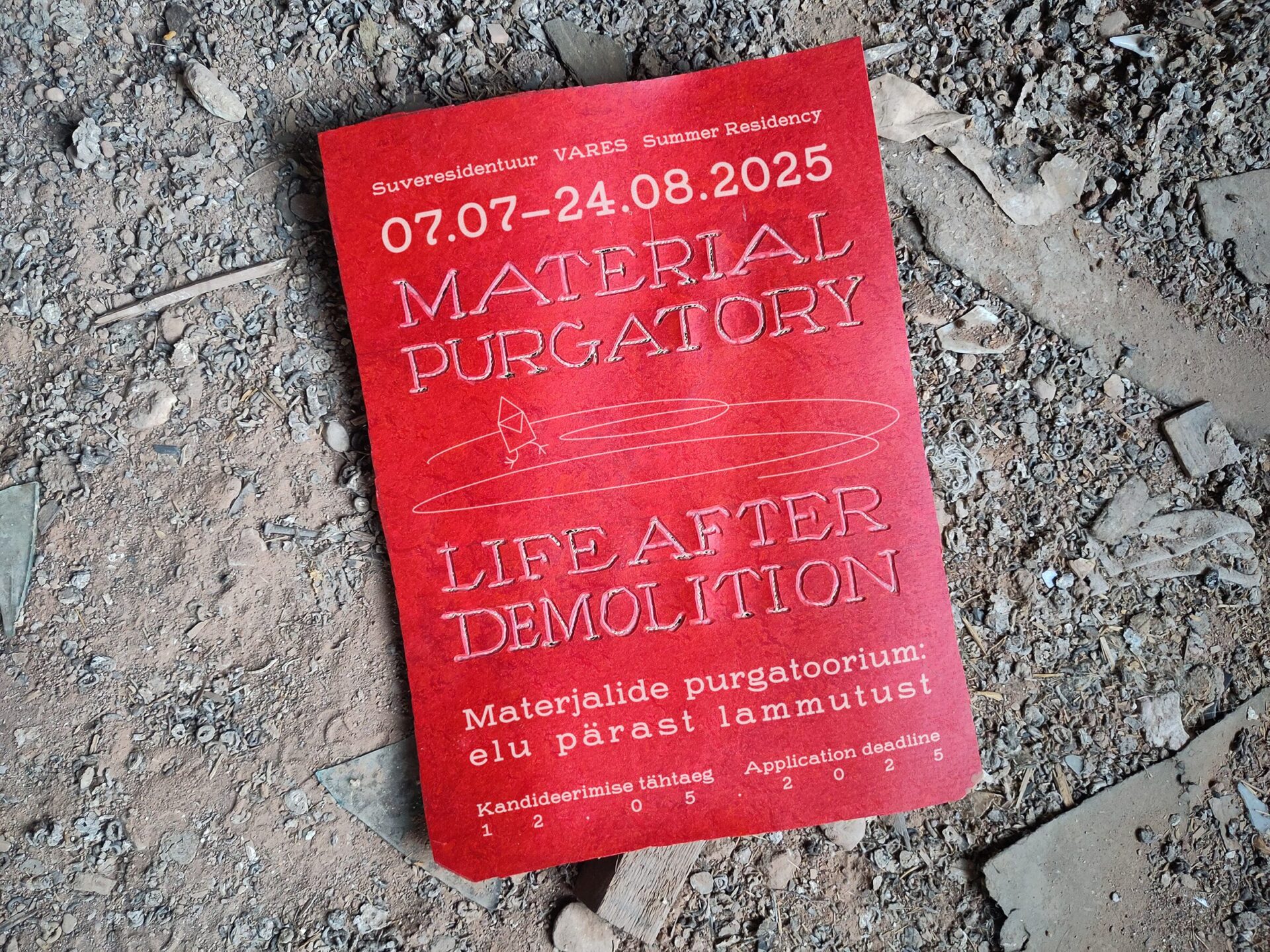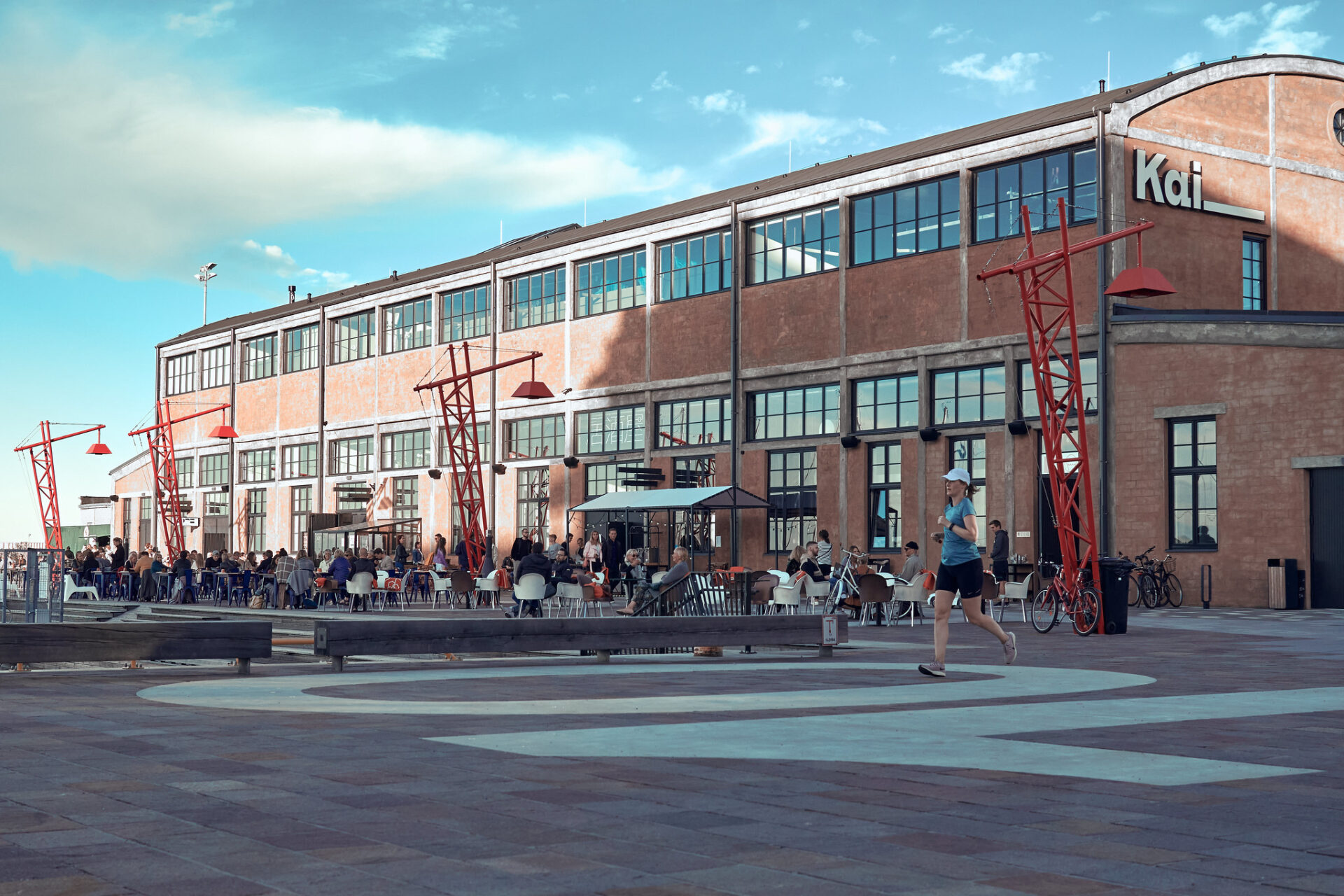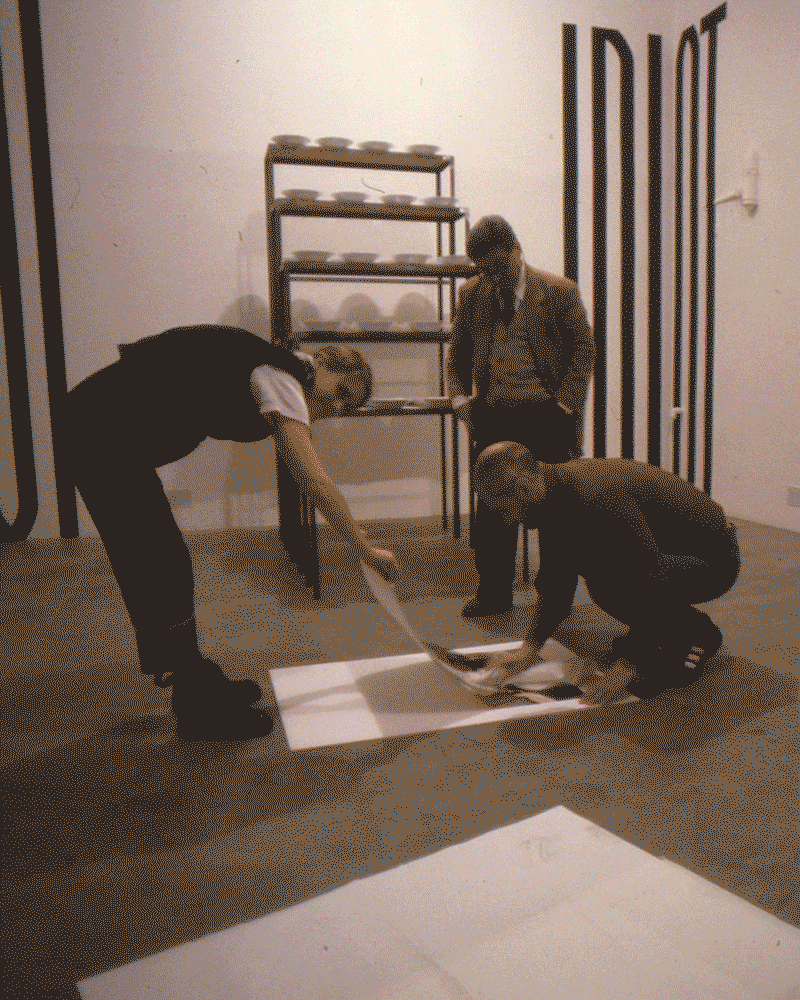Alberta Vengrytė: Your work explores themes of identity. By removing the subject’s image from the screen in your video works, you play with false, hidden and performative identities. How do these tactics help question established social-hierarchical structures? The category of gender is also important. How do these identities deconstruct their socio-political status and subjectivity as they move towards imperceptibility?
Kristina Inčiūraitė: By removing the image of the subject from the screen, I play with identity without revealing the whole picture, because then it can slip out of the grasp of social stratification. In both my early video works and my later experimental films, the voice behind the frame is an active participant in the story, but the narration is inconsistent, fragmentary, and modelled mostly from different sources. I like to interweave several stories and construct several storylines. Then the socio-political status of the character(s) is deconstructed in a way, or I would say more precisely, the socio-political status of the character(s) is reconstructed. It can be constantly reinvented, because we live in a time of constant change in values.
I remember in 2012, while making the experimental documentary The Meeting, I corresponded with a resident of neighbouring Svetlogorsk (in Russia) on an online dating site. I introduced myself in the name of my husband. I presented the facts of my life and my husband’s life mixed into one. I did not admit that I was telling the truth and a lie at the same time, in order to question the legacy of the past in the face of the present. Of course, that conversation would be completely different, or impossible, today, given the strong geopolitical upheavals against the background of the current war.
Social-hierarchical structures were especially shaken during the break in values when the Soviet mentality was moving towards a new, neoliberal, market-based value system. There was a moment when public spaces were empty, looking for content, asking for change. I thought they should be voiced. As a result, I created the series of short videos ‘Stages’, which covered the period 2002 to 2005. In it, we see empty shots of the Visaginas cultural centre, the Ozas cinema in Vilnius, Šiauliai outdoor summer concert stage, and other stages, where songs and fragmentary stories told by women about themselves and their surroundings come as if from backstage. From their testimonies, it can be felt that the transition period revealed much confusion, nostalgia for the past, and quite a lot of mistrust of the future.
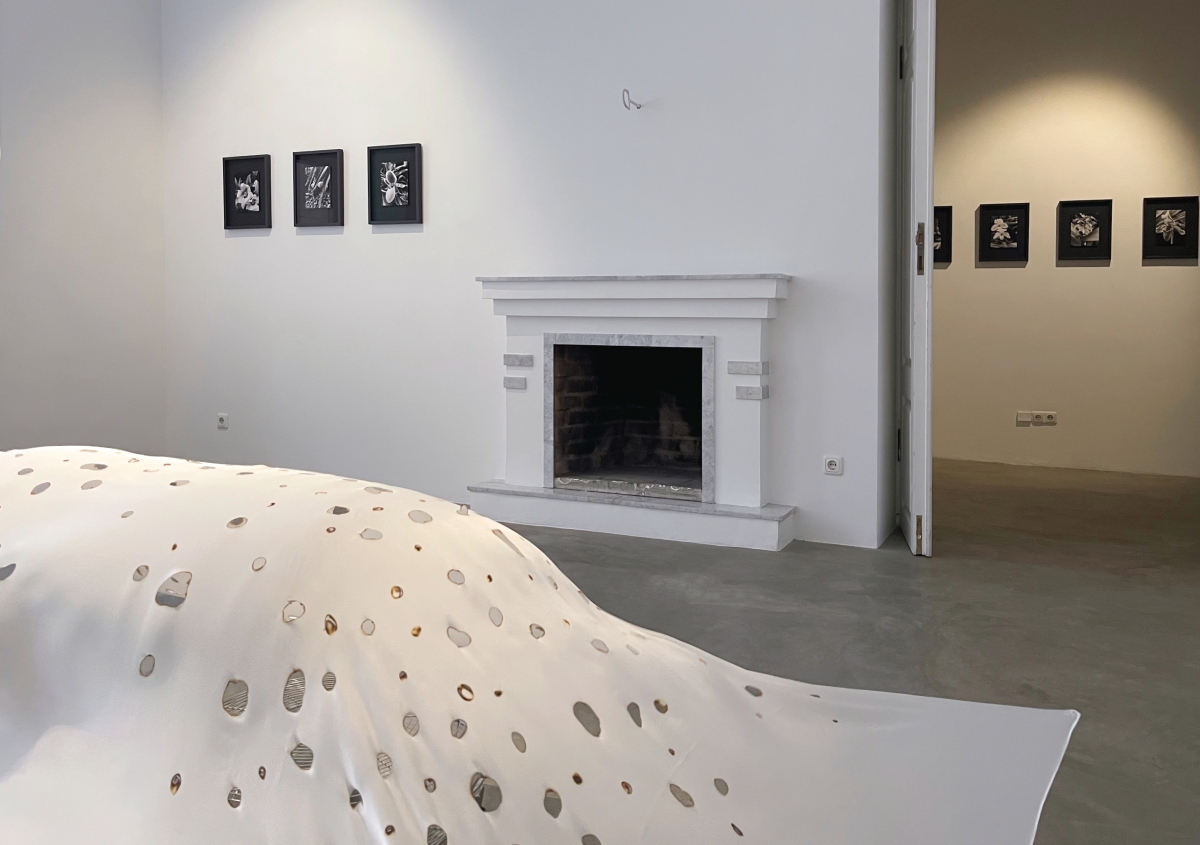
Inside Her, 2022, an object (silk fabric, two ventilators)
AV: One of your earliest works is the video performance Downstairs (2000), in which you walk with four men after a wedding ceremony. The art critic Jolanta Marcišauskytė-Jurašienė notes that in this work you tried to reflect the mood of a post-communist society undergoing a transformation, and the creation of new utopias: neoliberalism, capitalism, the new millennium.[1] The woman and her identity became an index of change in the transition. Why did you decide to film yourself in this production? After all, this is perhaps the only work of yours in which we see the author. How does marriage, a performative act of establishing the institution of the family, correlate with the societal changes you examine? What was your personal relationship with the socio-political currents of that period?
KI: You correctly point out that identity becomes an index of change in such a situation: new expectations, desires and utopias are generated at the beginning of a new millennium. As an artist, I wanted to immortalise myself in a performative act, and rather ironically present my personal position on the expectations of the new era. I played the bride. I left the Vilnius Wedding Palace with four men, friends or just acquaintances. A fragment of a fake marriage ritual is recorded as a kind of expression of the legalisation of happiness. We were not good actors, the joy of holding each other’s hands was artificial. As I remember, it was very cold to film, but it was fun. It was just fun to act, because marital happiness is presented as relative; after all, you can’t be equally happy with four different men. In other words, this is the ultimate disaster, because the expectations are usually higher than the reality itself, or what life has to offer in the future. Quite instinctively, I realised then that the neoliberal, competitive environment is full of new challenges and dangers, and that the democracy that was regained after independence is extremely fragile, distracted by populist winds.
It was no accident I chose a building from 1975 for that performance. I focused the camera on the wide, spacious stairs, which were popular in Soviet architecture, ideologically pompously engaged. I descended the spacious staircase into a new era, and never again appeared on my movie screen. The voice-over is more interesting to me, and more provocative for imaginative play. By the way, a similar motif of grand stairs was repeated when I showed the Svetlogorsk embankment in the already mentioned The Meeting twelve years later. The wide staircase is also associated with the dramatic stair scenes in Battleship Potemkin (the 1925 silent movie by Sergei Eisenstein) in Odesa. Only in my work, the stairs, which are covered with snow, are silent.
But I’m glad that other artists are not silent and replicate this early marriage video performance of mine. I want to recall the fun video work of Cooltūristės Upstairs, or Wedding International, created in 2013. In it, four girls in welding masks climb the stairs of the same Wedding Palace. The authors refer to the sculpture The Four Communards, and two musical works, the socialist anthem The Internationale and Felix Mendelssohn’s Wedding March. Both my works and those by Coolturistės question the architectural structure of the Soviet era and a time marked by social change. The norms of the patriarchal society are also questioned, because marriage is the heterosexualisation of the social bond. Only this model of family formation is legalised by it. It is a conscious act of legitimising gender norms, with which one wants to play around with creativity.

To Water My Body, 2022, an experimental film, 10.30 min
AV: Your exhibition ‘The Green Body’ was on at the (AV17) Gallery in Vilnius until 14 January 2023,. It presented your latest experimental film, series of photographs, and objects. Let’s discuss the film To Water my Body (2022) in a bit more detail. Identity politics, and ecological and feminist issues, are subtly opened up and conceptualised in this multi-layered work. The literary and mythological references that pervade the plot of the film convey the sublimation of a woman into garden vegetation, becoming a plant that needs no food, only water. Tell us how the image of the garden as a social, patriarchal structure helps to convey the narrative of the work? How does the work relate to literature? How do ancient Chinese legends and literary symbols create this conceptual narrative?
KI: In the film, the story begins with a man who is unhappy with his wife for not wearing a bra, because he thinks it is not very decent, especially in front of other people. Most likely, the woman’s behaviour shows that she is gradually abandoning earthly social norms and sublimating into the realm of vegetation. This detail in the story came from the novel The Vegetarian by the South Korean author Han Kang, published in 2007. After reading it, I thought that the desire to become a plant is not the woman’s illness, but rather a great effort by her will to abandon social and certain patriarchal clichés of how it is appropriate or inappropriate for a woman to behave. And it is important to add that becoming a plant can be seen as a major effort to abandon anthropocentrism, the consequences of which have trapped us in climate change.
In addition to the character in The Vegetarian, I was also fascinated by an interesting flowering tree which is often found in Irish gardens. The hard-to-pronounce Latin name is Davidia involucrata, which is usually called the Dove tree. In the spring, bracts (something intermediate between a flower and a leaf) bloom, which really resemble birds when viewed from a distance. I was intrigued by it. After looking into the history of the tree, I learned that it was brought to the British Isles from China. This tree is shrouded in legends about the historical Chinese beauty Wang Zhaojun, who voluntarily agreed to marry the king of a distant northern tribe to preserve stability and peace in her homeland. It is a marriage of political expediency, a voluntary renunciation of personal happiness. The Chinese legend explains how, missing her family, she would send letters to her loved ones attached to doves. Exhausted by their long journey, the birds would land to rest on a particular tree outside her family’s home. Since then, the tree has blossomed in the spring with flowers similar to those white birds.
While developing the plot of the film, I thought it was a sensitive, and at the same time sad, story about a personified tree, which seems to combine two stories naturally into one: a woman’s effort to become a plant, and a historical figure who gave up her personal happiness. I sometimes even think that this tree and these two mutually complementary stories found me; after all, for three years now I have been living surrounded by nature, far from Lithuania and close family.

Inside Her, 2022, an object (silk fabric, two ventilators)

Inside Her, 2022, an object (silk fabric, two ventilators)
AV: ‘The Green Body’ showed black-and-white photographs of orchids, referring to the vandalism by the Suffragettes in the early 20th century at London’s Royal Botanic Gardens, when they smashed several greenhouses, uprooted orchids, damaged flower beds, and burned down the tea pavilion. How did the protest show that the garden in the period in question is a patriarchal middle class space?
KI: I photographed the orchids at the Royal Botanic Gardens in 2022. With the series of photographs, I wanted to draw attention to the historical fact that the traditional British garden was not a neutral space, but a mirror of the expectations and desires of a large part of society. The Royal Botanic Gardens at Kew near London opened to visitors in 1840. At that time, the middle classes were becoming increasingly wealthy, sought more meaningful leisure time and recreational areas, and became very interested in gardening. The much-visited garden only confirmed how important it is. It should be emphasised that the gardens reflected the colonial ambitions of the British Empire; many rare plants were brought from British colonies. The policy of developing the garden was shaped by men, and women had a minor role.
The meaning of the garden is very symbolic: so it is not by chance that the Suffragettes targeted it in 1913. The British Empire was weakening, society was changing, and women were becoming more active and fighting for the right to vote. And why did the Suffragettes destroy the orchids? These flowers are also sort of personified and politicised. They were probably attacked because the orchids in this patriarchal garden are luxurious, and at the same time fragile, plants, which are associated in an old-fashioned way with the vulnerable identity of a woman. However, the situation changed during the First World War, when men who went to war were replaced by women, who became active gardeners.
AV: One space in the (AV17) Gallery presented an installation that consisted of a white silk structure, burnt by the flame of a lighter, moving in space and creating the silhouette of a woman’s body. How does the image of white silk relate to the theme of the exhibition? What role does the flow of material, the materiality of the work, play here? What is the relationship between the woman’s corporeality and the (non-)linguistic structures of emancipation and oppression, as it is revealed in the work?
KI: I wanted to connect both works, an experimental film and a series of photographs, with a burnt silk cloak. In addition to historical, literary and mythological works, I wanted living, sensitive materiality, something abstract, something breathing. This is an allusion to the white blossoming of the tree and the Suffragettes’ burning actions. I would say that the work is dedicated to woman, an active participant and reorganiser of society, who dares to challenge, but at the same time to sacrifice, to suffer.
In addition, I wanted to present a work that would indirectly correlate with both the events of previous eras and the challenges of the current war, which are not only faced by women. But while the burnt wounds are hot, they are difficult to articulate; deeper reflections and more time are needed for a detailed analysis of events.
This moving structure is corporeal without a body: there is nothing under the cloak. This is the nature of my work: to remove the physicality of woman, transfer it to the realm of the imagination, and leave space for the viewer to interpret the work.
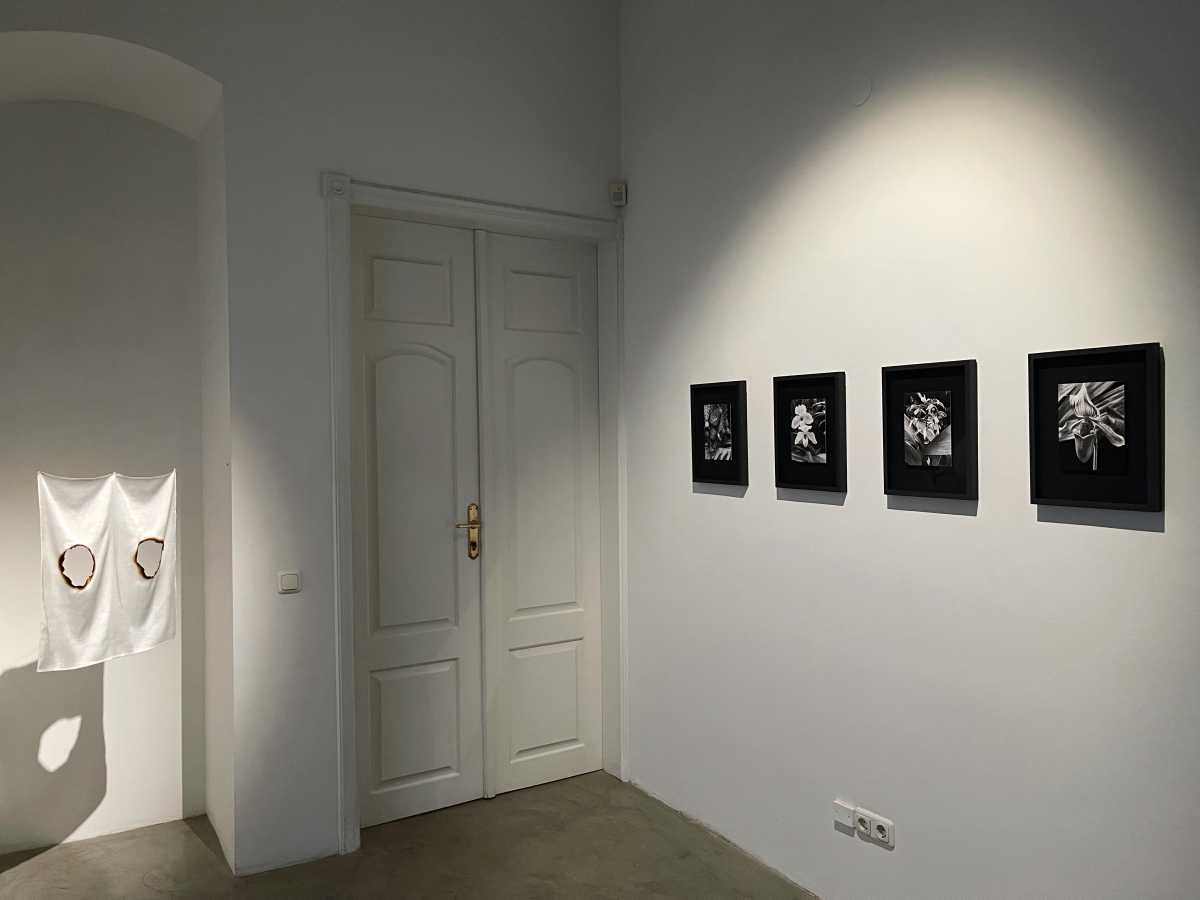
Her, 2022, an object (silk fabric)

Vote. Orchids, 2022, series of b&w photographs
AV: Together with issues of the female identity reflected in the works presented in the exhibition, we observe an extremely sensitively conveyed ecological concern for the future of the planet. How do you relate issues of subjectification to practices of the colonisation of nature? How does the motif of travel and the image of a messenger dove turning into plant bracts correlate with the exotic, colonial focus of the plant and the garden? How are different power relations balanced in the garden, a structure of man-made cultural nature, involving interactions between the subject and the surrounding socio-political environment?
KI: To answer these questions, I will recall some of my previous work. Of course, botanic and zoological gardens are a legacy of colonising practices. And maybe the visitors to these gardens are also colonised, imprisoned in the labyrinths of the search for exoticism?
In the 2018 experimental film Limbo, I show a luxurious hotel in the United States, the interior wallpaper of which has motifs of exotic plants, revealing a nostalgia for colonialism. However, these images of ‘trophies’ of conquest are accompanied by a voice-over which slowly conveys the secret that the hotel guest himself is imprisoned in it like an animal, and has become an exotic subject of research, during which the peculiarities of his social behaviour are analysed.
And in the 2015 experimental documentary The Echo of a Shadow, I move to China, where the local people are colonising themselves: a ghost town constructed according to a template of a European city is presented. It’s a shabby Chinese copy of Paris, unfolding from the perspective of an overgrown, swampy Eiffel Tower.
However, this film presents the journey of a local modern woman into herself, as ghosts reincarnate in her soul: a man, a cat, and finally a cricket that saves her ailing soul. I found these film characters in the pet market in Shanghai. And it is with this film that I draw a parallel with the new To Water my Body, which also offers a certain alternative to break free from the grip of anthropocentrism, which has stolen and culturalised nature. It is becoming not an animal, but an active plant. A mobile tree that transmits its secrets to migrating messenger doves, probably without their host.
AV: Thank you for your time and thoughts!
[1] MO muziejus (mmcentras.lt), [interactive], read 2022-12-14.
